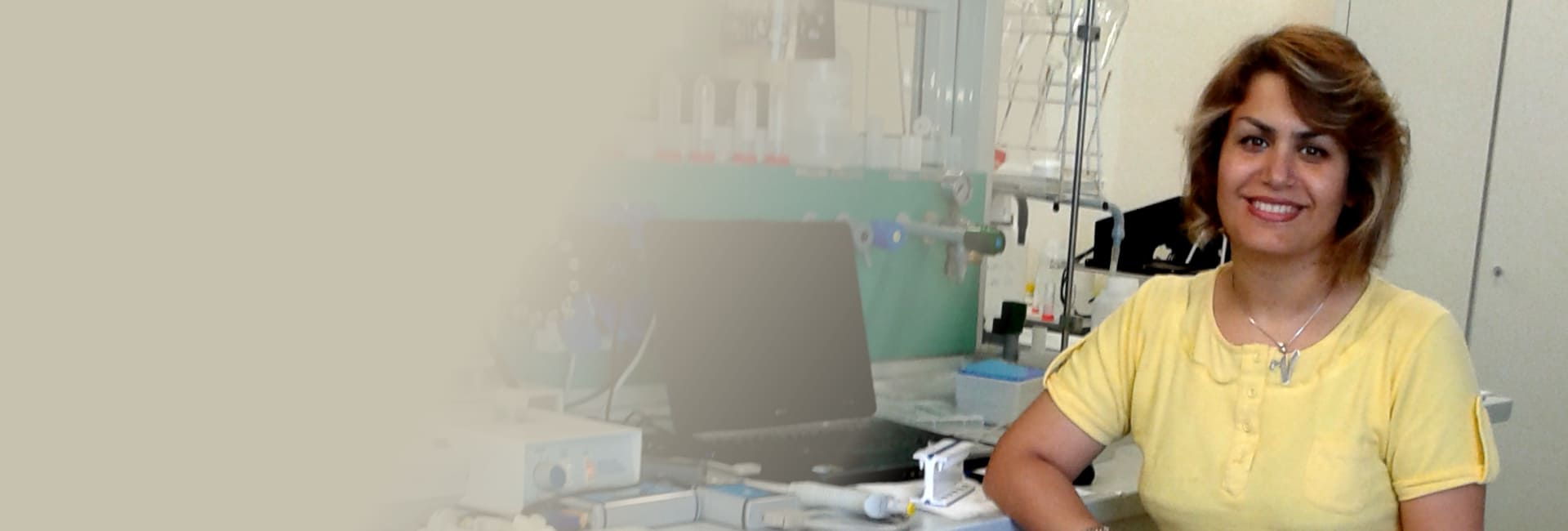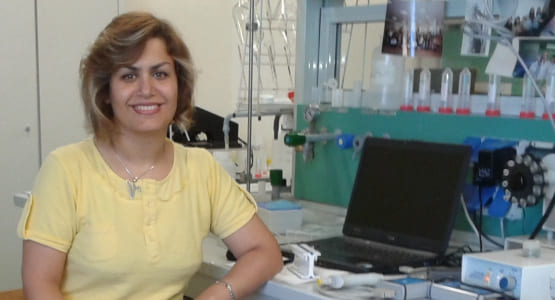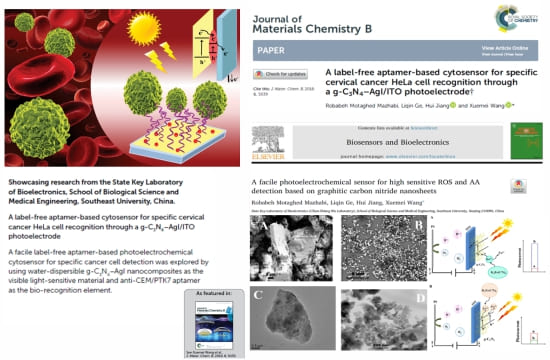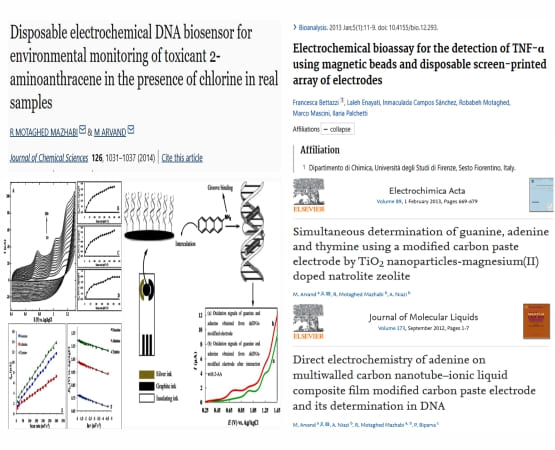

Dr. Robabeh Motaghed Mazhabi is currently a Junior Group Leader at the Institute of Advanced Materials, IAAM. Her research focuses on bioelectrochemistry, biomaterial engineering, nanotechnology for sensing, and therapeutic applications. She received a PhD from the Islamic Azad University in the field of analytical chemistry. Dr. Mazhabi's research interest is healthcare monitoring by designing and fabricating of wearable, printed electrochemical, photo-electrochemical sensor, biochips and biosensors such as immunological, cytological, DNA, aptamer etc.
Dr. Mazhabi's research interest is healthcare monitoring by designing and fabricating of wearable and printed electrochemical and photo-electrochemical sensor, biochips and biosensors such as immunosensors, cytosensors, DNA and aptamer based biosensors etc. Her research mainly demonstrates development of bioelectronic systems and diagnostic assay using screen printed electrode, array electrode, enzyme-based and/or sandwich immunoassay, whole cell biosensors, ELISA and designing sensors based on organic electrochemical transistors.

Dr. Robabeh Motaghed Mazhabi worked with biosensor group of Professor Marco Mascini at Universita Degli Studi Di Firenze, Italy as visiting researcher in the field of electrochemical biosensor. She was postdoctoral fellow at Southeast University in the field of phtoelectrochemistry with involvement of the designing and fabrication of photoelectrochemical sensors and biosensors. Dr. Mazhabi was also carried out research in the field of cell biology, evaluating the cytotoxicity effect of nanoparticles on cancer cells during her stay at the International Academy of Optoelectronics, South China Normal University.

Photoactive materials create light induced phenomenon for fabrication of sensitive and selective photoelectrochemical sensors and biosensors. Hereof, Dr. Robabeh Motaghed Mazhabi has made significant contributions by construction of a facile PEC sensor using graphitic carbon nitride nanosheets as photoactive species coated on the ITO electrode. She utilized the electron donor properties of potassium ferrocyanide and ascorbic acid for the tracing of hydrogen peroxide, hypochlorite, and ascorbic acid. The designed PEC showed a good potential for outdoor applications with high specificity, long-time stability, and good reproducibility.
In her another project, Dr. Mazhabi demonstrated a facile label-free PEC cytosensor using graphitic carbon nitride nanosheets doped with AgI NPs for designing of a novel label-free PEC aptamer based cytosensor for the specific detection of cancer cells like Hela cells. The water-dispersible photoactive nanocomposites was used as visible light-sensitive material and anti-CEM/PTK7 aptamer as the bio-recognition element. The visible light photocurrent response could be significantly improved by doping of AgI nanoparticles in the two-dimensional graphite like carbon nitride nano-sheets. The PEC response of the as-prepared biosensor was linearly proportional to the relevant Hela cells. The photo induced cytosensor exhibits long term stability, good reproducibility, excellent selectivity, and high sensitivity.

Biosensors can be classified based on three categories as per their receptor types. Typically, biocatalytic biosensors (i.e., enzyme), immunological biosensors (i.e., antibody), and nucleic acid biosensors (i.e., DNA). The fabrication and validation of biosensors are a vital part of biosensor development. Dr. Mazhabi has made a considerable contribution by designing different types of biosensors for bio-sensing and point-of-care devices applications. The sensitive, efficient sensing/biosensing devices and cost-effective for disease monitoring and environmental monitoring can be considered over all goals for prototype and/or translational feasibility. By developing DNA biosensor, she reported a low-cost screen-printed DNA biosensor as a simple strategy to quantitatively screen 2-AA as a potent direct-acting carcinogen which induces mutations in eukaryotic and prokaryotic cells. She also presented a novel, simple and reliable electrochemical method for simultaneous determination and direct electro-oxidation behaviors of guanine, adenine and thymine at a titanium oxide nanoparticles-magnesium doped zeolite Y modified carbon paste electrode. In the field of cancer diagnosis, she developed a facile and efficient platform for detection of cancer cells in the early phases of the disease using aptamer as a bio-recognition element. Dr. Robabeh had also contribution for construction of a disposable array electrochemical bioassay for the analysis of TNF-α as pro inflammatory cytokine. The bioassay was based on a sandwich format using alkaline phosphatase enzyme and she proposed strategy offers great promise for analysis of clinical diagnostics, considering also that arrays allow the simultaneous analysis of different samples.